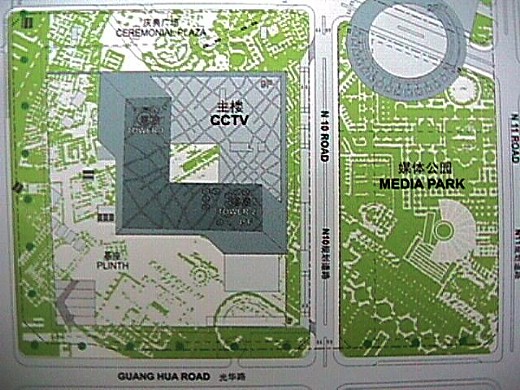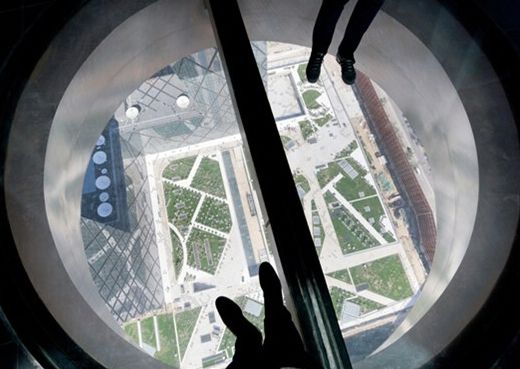Quondamopolis | a deliberate deterritorialization |
|
| 17 March | 2014.03.19 10:27 |
|
The Koolhaas/OMA use of the Ichnographia Campus Martius as 'floor paper' (not wall paper) occurs in several project, but the one project (that I know of at least) where the usage went from schematics through to execution is the plinth of the CCTV Headquarters.
|
Koolhaas was 17 years old and in the Netherlands when the picture was taken at Kahn's office in Philadelphia. The picture was then featured within Scully's book, Louis I. Kahn (1961). Marshall Meyers took the picture. (Meyers was in charge of completing the Yale Center for British Art after Kahn's death; I met Meyers briefly one evening, Fall 1981, in Yale's A&A building, and again the next morning in the Center for British Art. That's also the second and last time I saw 'Teeny', the mosquito embedded within one of the large window panes of the fourth floor corner-toward-the-Green gallery. The co-worker I showed Teeny to was astounded that I actually knew that tiny remnant of an insect was indeed there.)
|
Yes, the same as that employed in the two previous works. But this time, another reagent is introduced to the chemical process of catalyzing the form: the forty-five degree rotation of the geometric solid relative to the cage will let us try to understand the work before passing judgment. House I (the Barenholtz Pavilion in Princeton), 2158 and House II, 1969 (fig. 18), are one single search directed towards neutralizing every "realistic" perception of the building. The pure prism comes into conflict with the intersection of the floors and with the point-configuration of this rotation, is emptied. This theme bears only a superficial resemblance to Hejduk's Diamond House or to some of the work of Graves. To Eisenman, rotation serves only to question the very concept of "composition." There can be no synthesis after this transgression - as there is for Graves - nor any self-satisfaction in the work - as there is for Hejduk in Projects A, B, and C.
|
www.quondam.com/33/3308i.htm | Quondam © 2017.11.29 |


